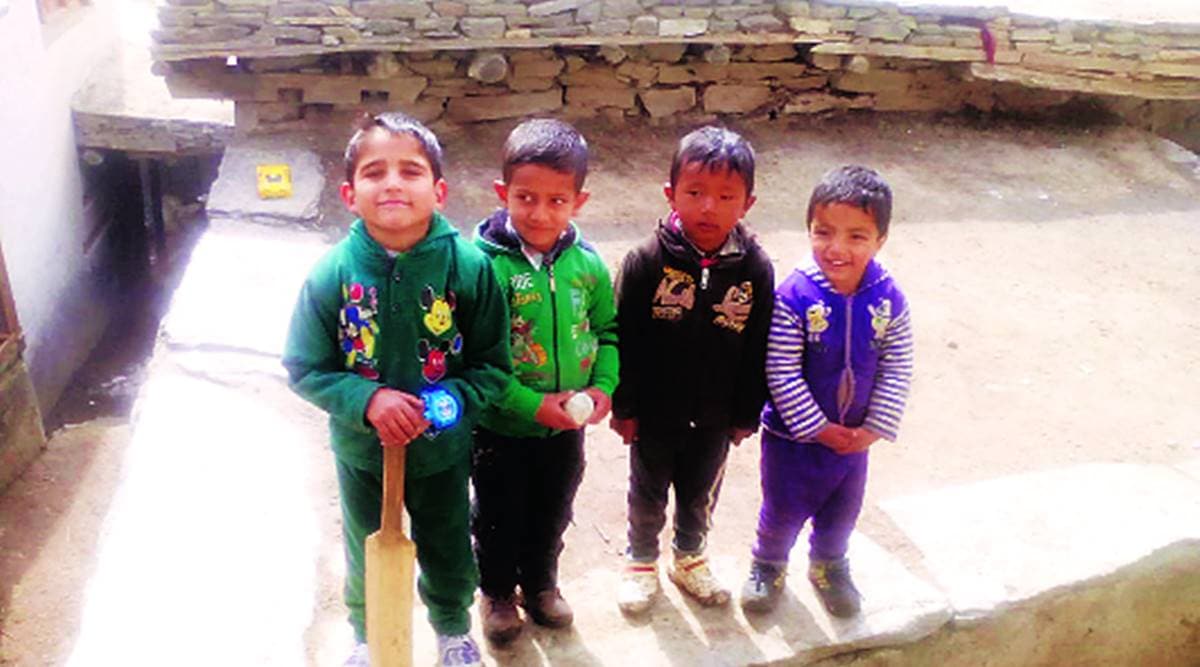 At Pangi Valley, Samagra Shiksha officials recently conducted a statewide survey to assess the level of virtual learning, but failed to even connect to respondents due to network issues.
At Pangi Valley, Samagra Shiksha officials recently conducted a statewide survey to assess the level of virtual learning, but failed to even connect to respondents due to network issues.(Written by Gagan)
“Humaare bacche subject bhi shayad bhul gae hain,” said Suban Singh, 60, a resident of Jiskoon village in Dodra-Kwar, one of the remotest parts of Himachal Pradesh, when asked about the status of formal learning of students in his area over the last five months.
There is negligible internet connectivity in the area – a single BSNL satellite tower serves the entire sub-division of Dodra-Kwar in south-eastern Himachal comprising 20 villages and more than 6,000 residents. It offers only call connectivity during the day, but 2G internet service is available in the valley during “off-hours” at night if the weather is clear, according to a BSNL official and residents.

As a result, there have been no virtual classes here. Udham Singh, a resident of the area, whose son studies in Class XI, said that in the past month, a few teachers have started visiting students at their homes to give them assignments. Many of the parents are illiterate, and thus cannot even teach their children, he said.
A similar situation prevails in Pangi, a remote tribal area in the northwestern part of the state with a population of around 20,000. The sub-division has three 2G towers, but the low-speed internet service remains erratic, due to which students in the valley have remained deprived of virtual learning, said Veer Singh Rana, a block development council member from Dharwas village.
“Teachers are trying to reach them in other ways, but it’s not possible to reach every student’s door due to the hard geographical conditions here,” he added.
To overcome these challenges, teachers have started airing video lectures for Classes X and XII three hours a day through the local cable network, though it remains largely confined to Killar, the sub-divisional headquarter, Rana said. Besides, educators are distributing offline study material, and students with suitable devices can also collect it through pen drives or USB cables, he said.
Poor network connectivity remains a problem in several other parts of the state, notably the district of Lahaul and Spiti. According to Anil Sehgal, a former BDC member from Lahaul, only students in Keylong and Gondla valley have regular access to virtual learning in these parts. “In other areas of Lahaul, connectivity is insufficient and online learning full of hurdles,” he said. Prem Singh from Kaza said no online classes are taking place in Spiti due to network problems.
Recently, officials of the Samagra Shiksha scheme conducted a statewide survey to assess the level of virtual learning among the students, but failed to even connect to respondents in Pangi, Dodra-Kwar and Spiti due to network issues.
“We learnt that in some areas such as Kaza, offline worksheets were being delivered to students as an alternative,” said Anuradha Sharma, a research and evaluation coordinator.
The survey found that in other areas of the state, around 95 per cent students were connected to teachers through electronic means. Whatsapp is currently the main mode of virtual teaching in the state, though lectures are also broadcast on Doordarshan and the website of the ‘Har Ghar Pathshala’ programme. Some workbooks meant for students were recently dispatched to various districts by Samagra Shiksha officials.
continued on page 2